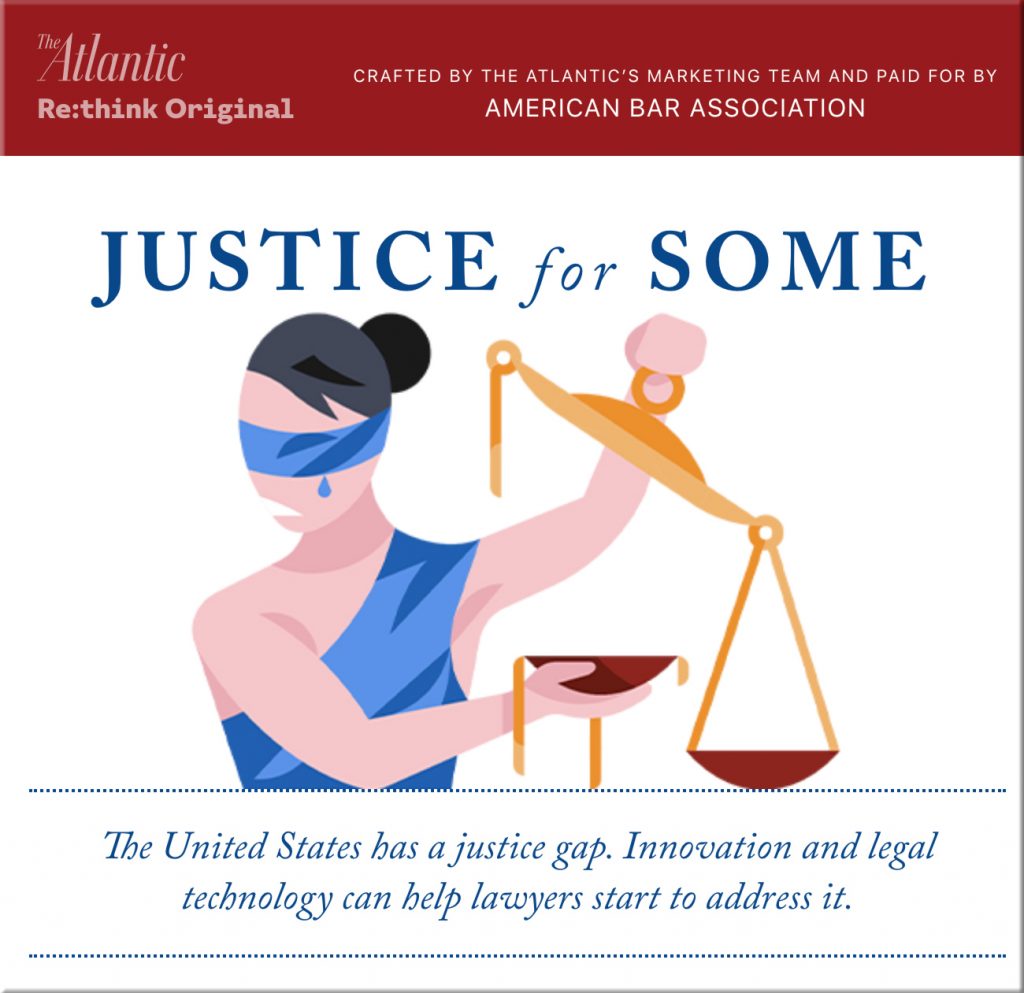Justice for Some — from theatlantic.com and the American Bar Association (ABA)
Excerpts:
Today in the United States, millions of people like Carol lack access to basic legal resources for a variety of reasons. They forgo legal action because they find the system too overwhelming, for example, or because they perceive it to be too expensive. Many simply do not know when they qualify for legal services in the first place. And it isn’t an issue that affects only the elderly. Middle-class Americans, recent college graduates, first-generation immigrants, and new parents can all experience barriers to accessing the legal resources they need.
This issue affects lawyers, too.
…
DEFENDANTS FACING JAIL TIME in criminal cases have a constitutional right to be provided an attorney, but many people are surprised to learn there is no equivalent guarantee for individuals in civil cases. Typically, defendants in such cases—including divorces, domestic violence orders, home foreclosures, evictions, wills, and immigration applications—are responsible for attaining their own legal representation. And therein lies the gap.
…
By one estimate from the Legal Services Corporation1, 86 percent of low-income people with civil legal problems received inadequate or no legal help in the past year. Between 2015 and 2018, roughly 80 percent to 90 percent of domestic relations cases in Philadelphia involved at least one self-represented party. In 2016, 75 percent of low-income rural households experienced a civil legal problem, but only 22 percent sought professional legal help. And in 2017, 90 percent of evicted tenants in New York City never made an appearance in court.
“Search results have a huge influence on what people trust,” Hagan says. “If Google tells someone that an answer to their legal question is the number-one hit, people assume that it’s correct, unaware that it may be based on laws in another state. We have seen people click on Australian legal advice even if they’re in California.”
“We know the most successful technological solutions to the access-to-justice gap involve collaboration with lawyers, with technologists, with entrepreneurs and, hopefully to an increasing extent, with consumers,” Rodriguez says. “The object of what we’re doing is to improve the ability of lawyers to provide representation, not to supplant their businesses.”









